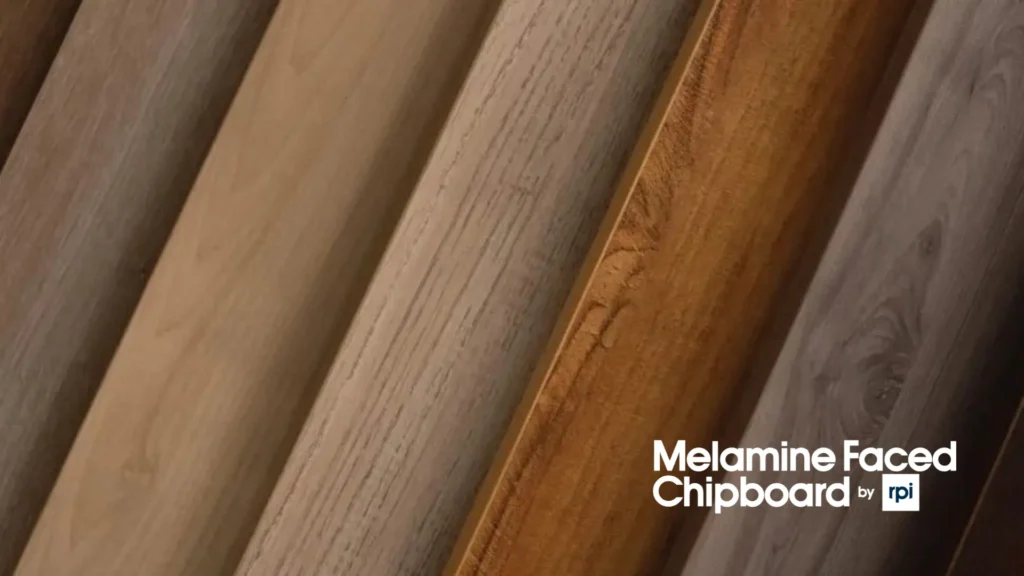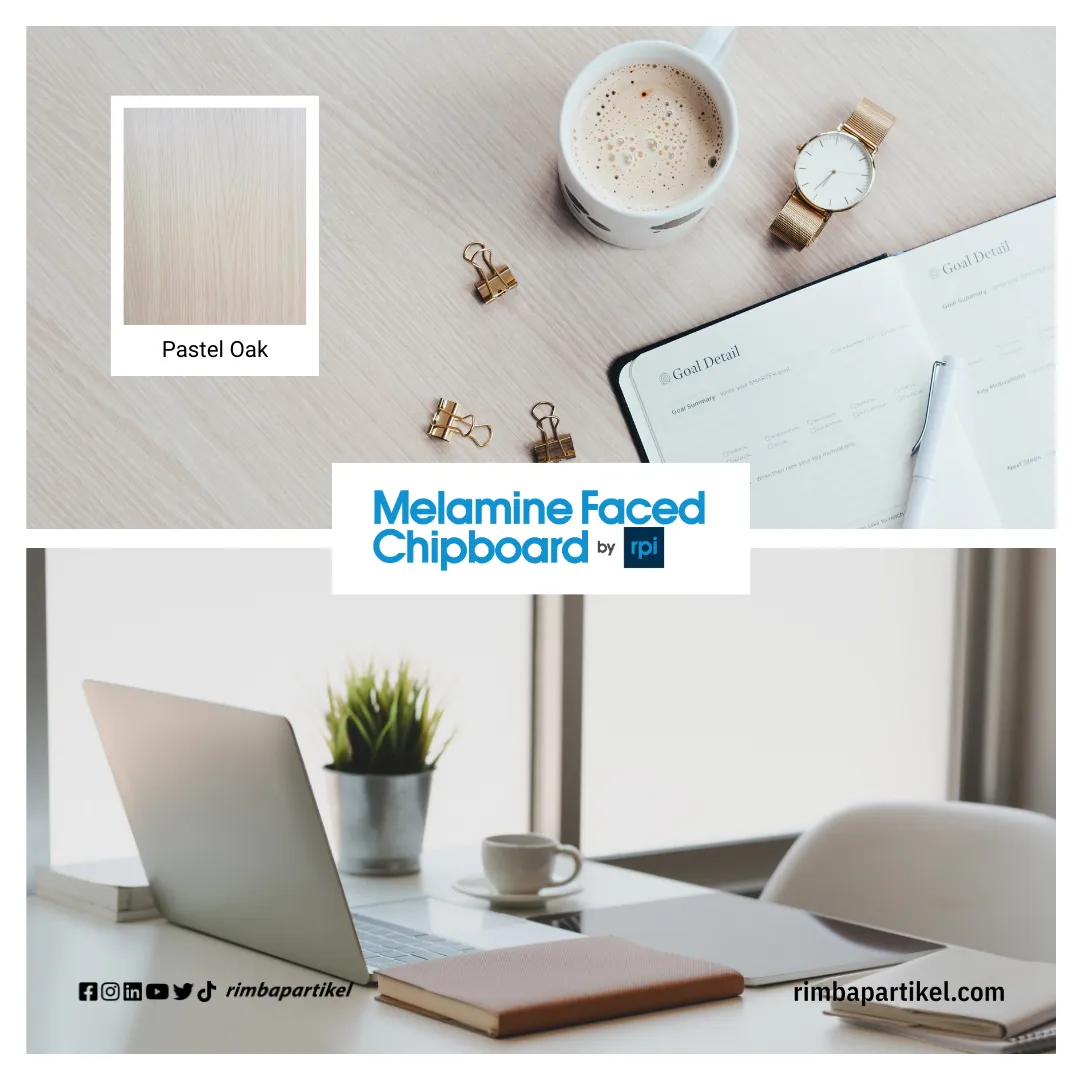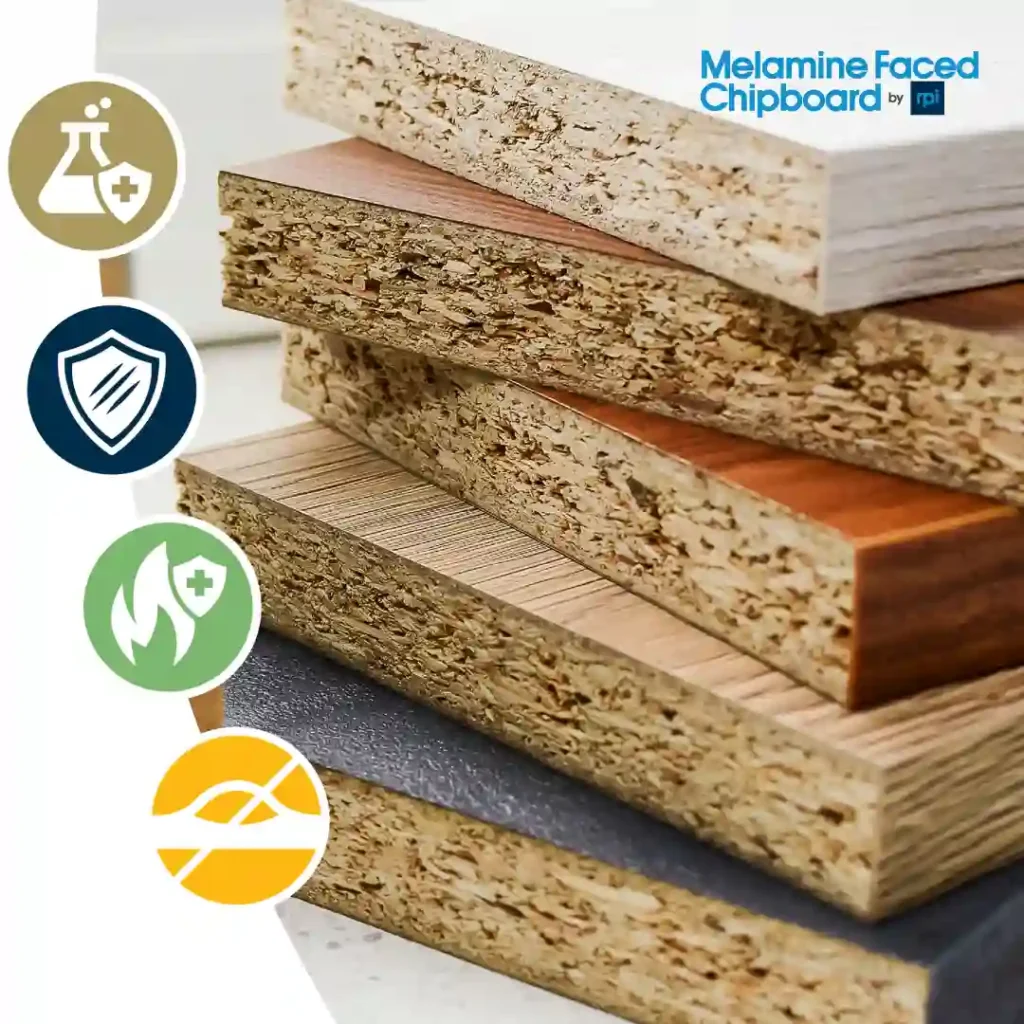Melamine faced chipboard (MFC) is a popular and versatile material used in the construction and furniture industries. It is a composite wood product that combines the affordability and strength of chipboard with the decorative appeal of melamine resin.

This combination results in a durable and aesthetically pleasing material that can be widely used in a variety of settings. To know more about this material, check out the following discussion and know the recommended places to get it!
Melamine Faced Chipboard: Composition and Manufacturing
Melamine faced chipboard consists of a core comprising compressed wood particles or chips, which a resin adhesive binds together. It has an outer layer covered with melamine-impregnated paper.
During the manufacturing process, melamine undergoes heating and curing to form a hard, durable surface. Therefore, this process creates a strong bond and imparts a smooth, decorative finish.
Advantages of Melamine Faced Chipboard
Using this material provides several advantages, including:
- Aesthetics
The aesthetic appeal of MFC is a key advantage. Melamine surfaces are available in a wide variety of colors, patterns, and textures, which offer endless design possibilities. With its popularity this makes it a preferred choice for furniture, cabinetry, and interior design applications.
- Durability and Strength
The combination of chipboard and melamine resin produces a durable and robust material that can withstand daily wear and tear, making it suitable for high-traffic areas in both residential and commercial environments.
- Ease of Maintenance
MFC is easy to clean and maintain. Its smooth, non-porous surface is resistant to stains and can be cleaned with a damp cloth. This makes it an ideal choice for applications where cleanliness and hygiene are important, such as kitchen cabinets and countertops.
- Versatility
Melamine-coated chipboard exhibits versatility and finds applications in a wide range of uses, such as furniture manufacturing, kitchen and bathroom cabinets, wall panels, and shelving. Its capacity to adapt to various settings contributes to its extensive utilization in the construction industry.
Applications of MFC Board

This MFC material is often used for various purposes, for example:
- Furniture Manufacturing: Manufacturers widely use MFC in furniture production, incorporating it into the manufacturing of bookcases, wardrobes, and tables. The material’s versatility in design and color options enables manufacturers to create products that accommodate a broad range of styles and preferences.
- Kitchen and Bathroom Cabinets: MFC’s durability and resistance to moisture make it an ideal material for kitchen and bathroom cabinets. As such, it can withstand the rigors of daily use and exposure to moisture without compromising its structural integrity.
- Interior Design: Interior designers favor melamine-faced chipboard for crafting custom finishes in residential and commercial spaces, utilizing it for various decorative elements such as wall panels and room dividers
That’s the explanation of the MFC board that is important for you to know. In essence, it offers a winning combination of affordability, durability, and aesthetic versatility.
Its wide use in various applications in the construction and furniture industries has proven its popularity.
As technology advances, the range of design options and performance characteristics of MFC continues to expand, ensuring its relevance in modern construction and design projects.
If you are looking to acquire the finest quality MFC products, you can find them at PT Rimba Partikel Indonesia.
Within our factory’s operational processes, we consistently prioritize the highest levels of consistency in RPI product output. Moreover, we mandate timely delivery to ensure we meet customer expectations and satisfaction.
Not only that, RPI is currently also collaborating with AICA Indonesia to bring even better product quality.
RPI’s MFC Products Collaboration with AICA Indonesia

As slightly reviewed earlier, RPI is currently working with AICA Indonesia to bring better quality products to your hands. In addition, there are several advantages that you can get from this collaboration, for example:
- Diverse collection of color variation.
- AICA Indonesia experience with their HPL Product Quality beneficial to RPI’s MFC products.
- Collaborating with AICA Indonesia, RPI’s MFC have many color collections to choose from 150 patterns, 4 types of surface emboss (alutex, soft alutex, woodgrain, flat).
Isn’t it interesting? So, what are you waiting for, use PT RImba Partikel Indonesia products now and get various advantages. For more information about melamine faced chipboard, click here.


